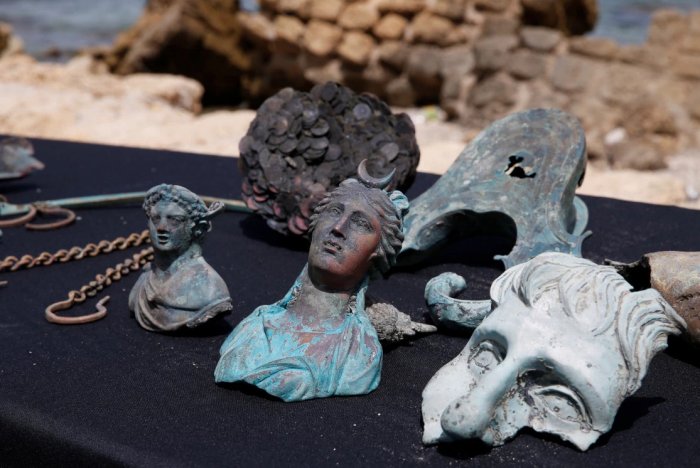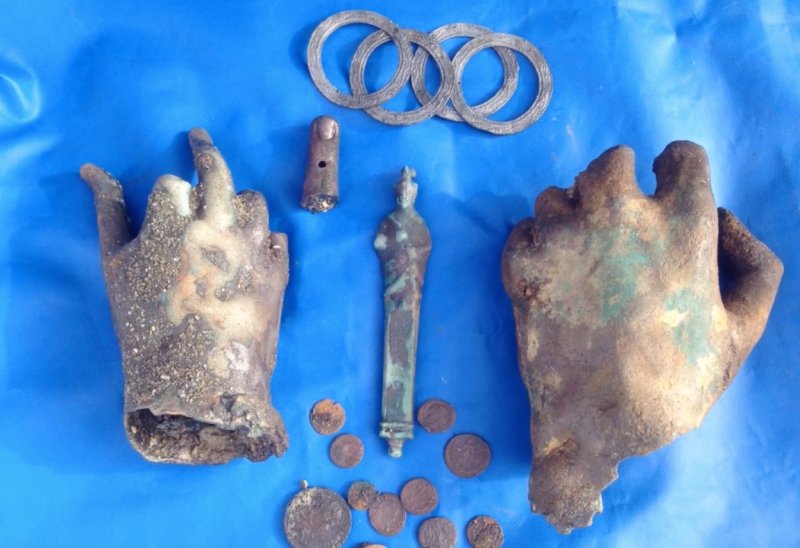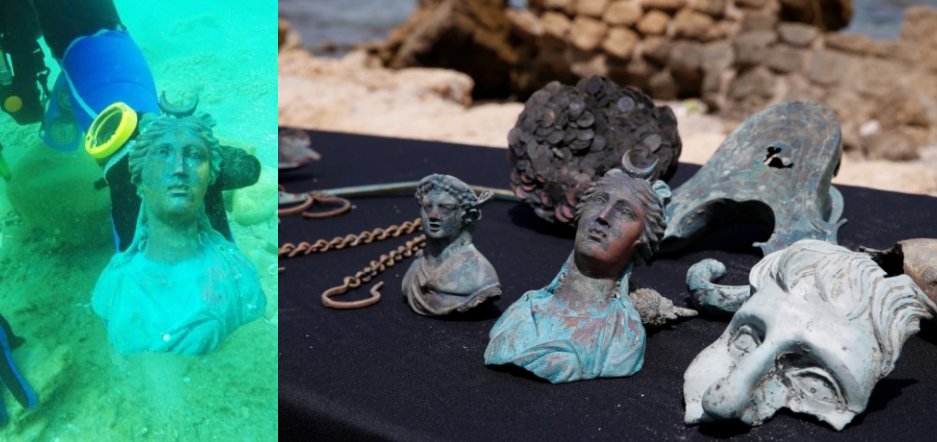MessageToEagle.com – Archaeological underwater discoveries are always exciting.
About 1,600 years ago, a Roman ship filled with beautiful bronze statues, coins and other intriguing artifacts sank in a storm in the ancient Mediterranean harbor off Israel’s coast in Caesarea. Now, two amateur divers, Ran Feinstein and Ofer Ra’anan, who were swimming in the ancient harbor before the Passover holiday last month, have accidentally found this stunning ancient Roman underwater treasure.

“It took us a couple of seconds to understand what was going on,” Raanan recalled.

He said they left the first sculpture on the seabed where they found it, but then when they discovered a second one, they realized it was something special and brought it to the surface. They later searched the area and uncovered more ancient artifacts.
“It was amazing, I dive here every other weekend and I never found anything like that ever,” he said.
It is Israel’s biggest find of underwater Roman-era artifacts in three decades, archaeologists said.
See also:
2000-Year-Old Roman Gold Coin Found In Northern Israel
The Israel Antiquities Authority sent its divers to investigate and recover the precious Roman-era cargo, which includes bronze statues, lamps, jars, animal-shaped objects, anchors and thousands of coins with images of Roman emperors Constantine and Licinius.
Some of the objects date to the fourth century, while others are from the first and second centuries, said Jacob Sharvit, director of marine archaeology at the IAA.
The port of Caesarea was commissioned by Herod the Great in the 1st century BC and became an important economic artery in the Mediterranean Sea until it sank for unknown reasons soon after its completion. Some scientists believe it is located on a geological fault line; other theories point to a series of earthquakes or even a big tsunami.
Last year, Israeli divers found 2,000 gold coins in Caesarea dating back to the 10th century.
We cannot help wondering what more is hidden underwater off Israel’s coast in Caesarea.
MessageToEagle.com







